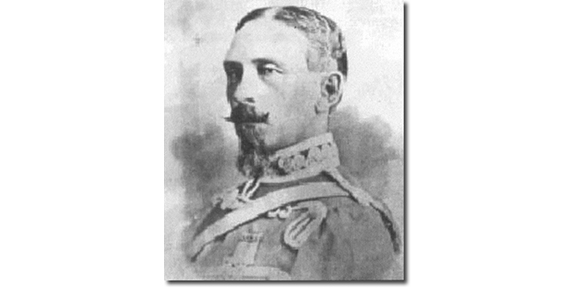by Bruce Cherney (part 3)
In a March 13, 1877, letter to his father, Dr. W.A. Baldwin recalled a visit to the Gimli hospital a year earlier on November 26. Dr. Baldwin told his father in Toronto that the hospital was full of patients with smallpox. “They were to be seen in every stage, some dying and some convalescent.”
Dr. Baldwin said he visited several homes, “and such a sight you never saw. Every house had someone down with the disease.”
According to Dr. Baldwin, “the houses were of the worst description. I had to stoop to go into nearly every house. There were some doors so low I had to go on my hands and knees to get in and such filth. I cannot describe it.”
He remarked that he had to sleep in “these wretched houses,” and always “slept with my clothes on, so that I would not get lice on me.”
Dr. Baldwin said that in some houses there were 18 to 19 occupants.
Dr. Lynch was highly critical of the Icelanders as colonist, blaming them for their plight by saying: “Centuries of isolation and intermarriage have had the effect of reducing their physical condition to a point below which they are likely to be successful in the rude contest with western pioneers.”
The conditions Dr. Baldwin described can be easily explained as resulting from the difficulty of carving a new settlement out of the wilderness and the toll taken by the disease, which severely handicapped the efforts of the colonists, as well as the sudden influx of so many settlers at one time during the summer, leaving little time to prepare adequate accommodations for all.
Many of the settlers arriving in the summer of 1876 were impoverished and half were originally destined for Nova Scotia, but the provincial government recognized its Markland Colony could not accommodate further settlers so the Icelanders were rerouted to the Icelandic Reserve in the District of Keewatin.
“The whole of those who were going to Nova Scotia were found, without exception worth mentioning, to have no money at all,” said Sigtryggur Jonasson, who was a founder of New Iceland.
The immigrants were rescued when the federal government agreed to provide loans that would cover their transportation to Manitoba, as well as for provisions for the first winter, cook-stoves, tools, farm implements and 40 cows.
Over the first years of the colony, the government would loan the settlers $80,000, which was absolutely essential to New Iceland’s survival at a time of outright adversity.
“The sufferings of the sick, the task of nursing them, the strangeness of the people in an isolated place, poverty, and the loss loved ones, all combined to make life for the settlers dreary and difficult,” according to colonist Gudlaugur Magnusson (Almanak O.S. Thorgeirsson, 1899).
The very fact that the Icelanders persevered under such trying conditions and subsequently thrived is testament to their appropriateness as settlers in an unforgiving land, despite Dr. Lynch’s personal beliefs.
Lt.-Col. William Osborne Smith left November 26 for New Iceland to select the site for the quarantine guard to set up a post, and determined the best location was at Netley Creek. After a hurried return to Winnipeg the same night, Smith ordered a detachment under Ensign Street to immediately proceed to the new station. The detachment created the first quarantine station the very next day. A house along the creek served as a makeshift hospital.
“From this station posts will be thrown out to Smith’s and Monkman’s on the Red River, to prevent unauthorized traffic from the infected districts on the east side of the lake,” reported the November 27, 1876, Free Press.
With such measures, the colony was effectively cut off from the outside world.
According to a December 3 report from Gimli, the hospital was successful in treating smallpox patients, and cases outside the hospital were of a milder form of the disease. It would later be reported that of 64 patients admitted for smallpox in Gimli’s hospital, there was only one death (Free Press, December 16).
“The doctors, in addition to Gimli, have six other stations to the north under their care,” reported the Free Press on December 4. “At Sandy Bar the Indians are recovering under the medical treatment they have received. Dr. Baldwin was absent visiting the Big Island Indians ...
“From this statement of facts there is every encouragement to hope that on the west side of the Lake the disease is under management and can be limited from spreading north and south.”
Although news of improved conditions was being received from Sandy Bar, the disease had taken a severe toll. John Ramsay’s wife, Betsey, had perished, as did four of his five children, with his surviving daughter, Mary, being horribly scarred by the disease. At Sandy Bar (which was five kilometres south of present-day Riverton and not to be confused with Sandy Bar Beach) and the surrounding area, some 200 people — the vast majority being Cree and Ojibway — would eventually succumb to the rages of smallpox, reported Dr. Lynch.
Meanwhile, the federal Indian Department had dispatched vaccine for First Nations people living on the east side of Lake Winnipeg, including Fort Alexander, Fairford and Brokenhead. More vaccine was sent to the St. Peter’s Reserve on the west side of the lake at the encouragement of its residents. The fact that First Nations people readily accepted vaccination contributed to stemming the spread of the disease from the points where it was first detected, although in isolated incidents vaccine and medicine arrived too late for some. Also helping to keep the local population relatively smallpox free was that the fact that fear led residents of reserves to voluntarily stay put.
(Next week: part 4)



